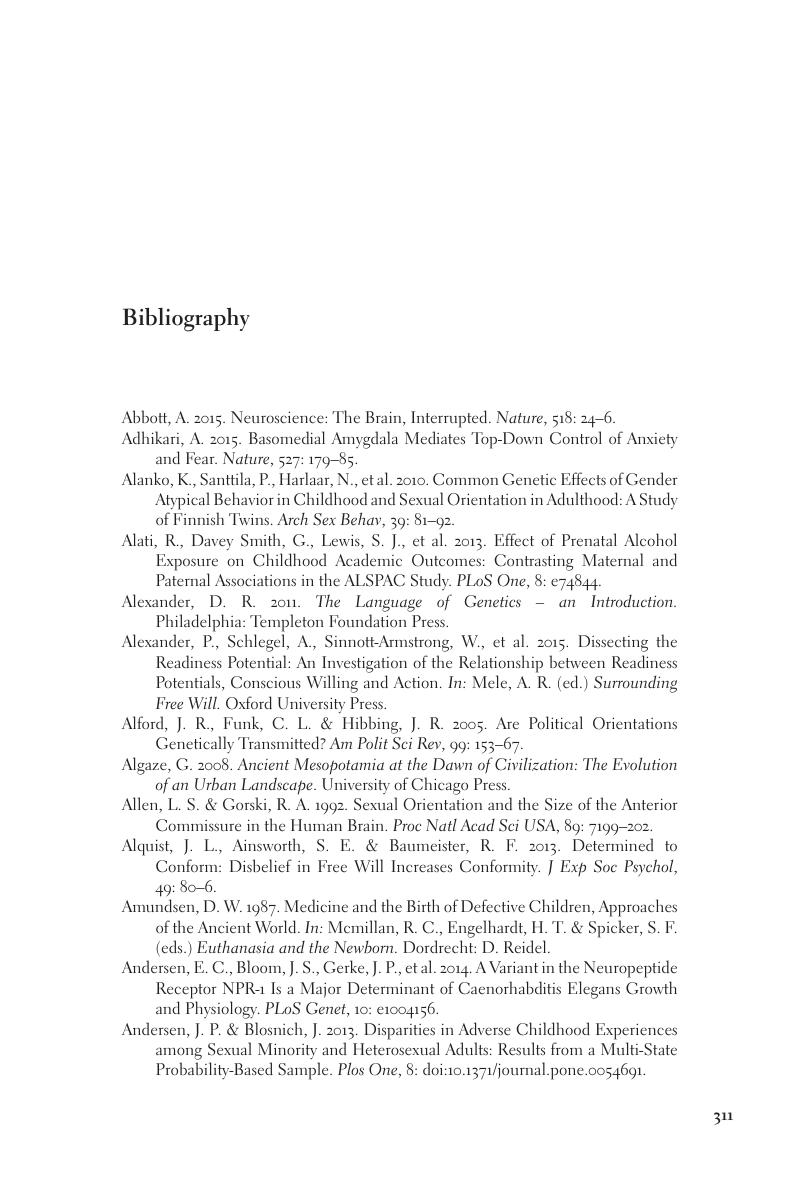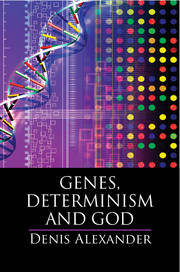Book contents
- Genes, Determinism and God
- Genes, Determinism and God
- Copyright page
- Contents
- Preface
- Introduction
- Chapter 1 Human Personhood Fragmented?
- Chapter 2 Reifying the Fragments?
- Chapter 3 The Impact of the New Genetics?
- Chapter 4 Reshaping the Matrix?
- Chapter 5 Is the Worm Determined?
- Chapter 6 Prisoners of the Genes?
- Chapter 7 Behavioural Molecules?
- Chapter 8 Mensa, Mediocrity or Meritocracy?
- Chapter 9 Gay Genes?
- Chapter 10 Not My Fault?
- Chapter 11 Causality, Emergence and Freedom?
- Chapter 12 Made in the Image of God?
- Notes
- Bibliography
- Index
- References
Bibliography
Published online by Cambridge University Press: 13 July 2017
- Genes, Determinism and God
- Genes, Determinism and God
- Copyright page
- Contents
- Preface
- Introduction
- Chapter 1 Human Personhood Fragmented?
- Chapter 2 Reifying the Fragments?
- Chapter 3 The Impact of the New Genetics?
- Chapter 4 Reshaping the Matrix?
- Chapter 5 Is the Worm Determined?
- Chapter 6 Prisoners of the Genes?
- Chapter 7 Behavioural Molecules?
- Chapter 8 Mensa, Mediocrity or Meritocracy?
- Chapter 9 Gay Genes?
- Chapter 10 Not My Fault?
- Chapter 11 Causality, Emergence and Freedom?
- Chapter 12 Made in the Image of God?
- Notes
- Bibliography
- Index
- References
Summary

- Type
- Chapter
- Information
- Genes, Determinism and God , pp. 311 - 356Publisher: Cambridge University PressPrint publication year: 2017



